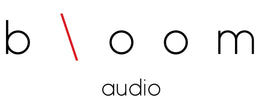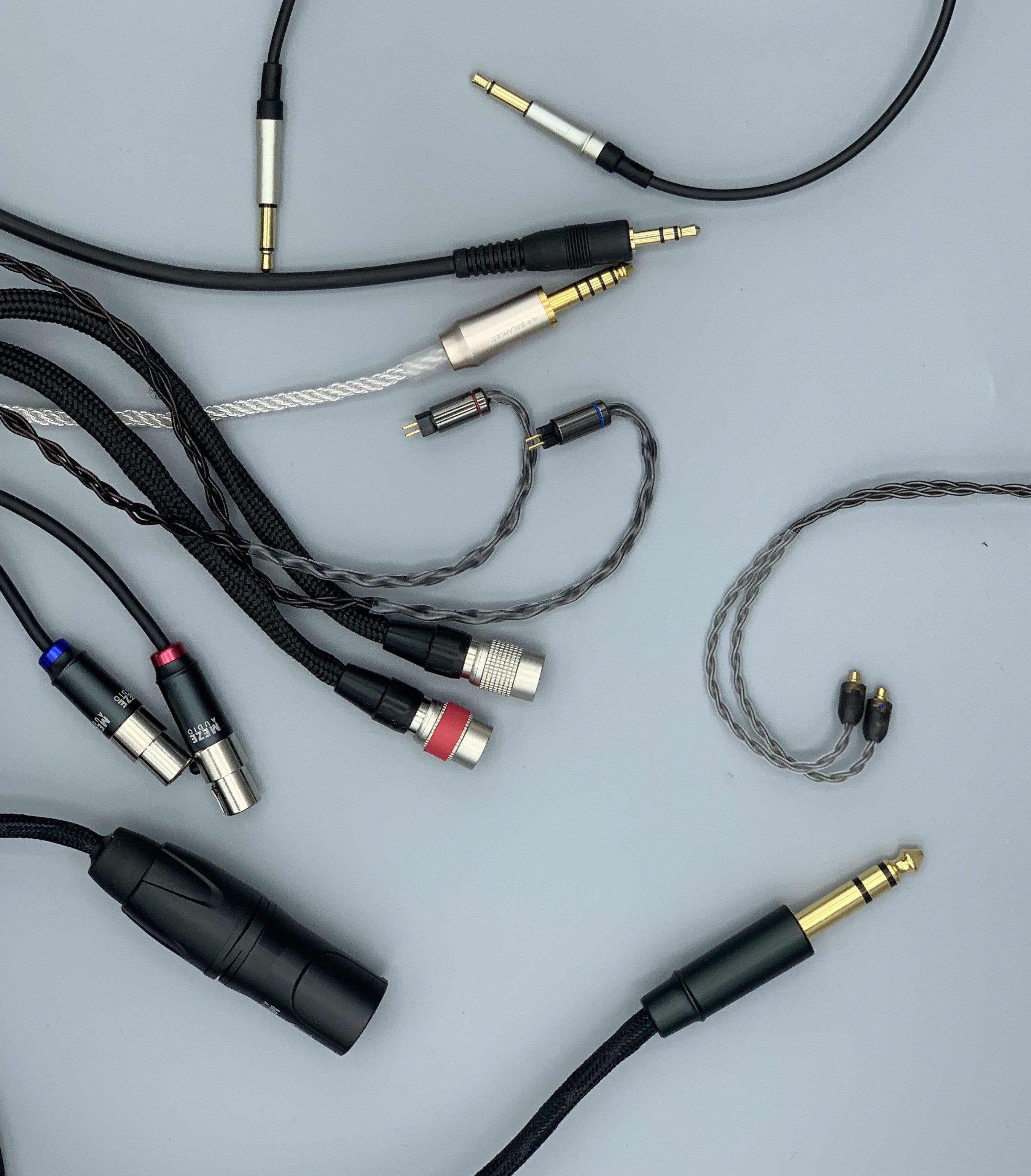So you have your complete hi-fi stack: your player, a DAC, and an amp. Now you need to figure out what the best way to connect it all is. What’s the difference between 2-pin and MMCX? 3.5mm and 6.3mm? Balanced and unbalanced? Let’s look at the different ways that you can connect your headphones.
How do Headphone Cables Work?
The job of any cable is to get a signal from point A to point B. With headphone cables you need to transmit an analog audio signal from the amp through a cable with a very low voltage current.
The most common way to do this is through a Tip/Ring/Sleeve (TRS) cable. You’ve probably seen one as a 3.5mm or 6.3mm “standard headphone cable.” The cable has 2 signal wires and the ground. The tip of the connector is connected to the left wire, the ring is connected to the right side, and the sleeve is for the ground wires to each side. All together, you transmit a stereo signal to the headphones. There’s also TS, which is mono, and TRRS or even TRRRS which we’ll get to in a minute.

Whatever specific technology you use, the principle is the same – you need to get the right and left channel signals (and typically a ground) from the source to the right and left sides of your headphones. Let’s break down how this looks with different types of headphones and cables.
Terminations: Balanced and Unbalanced
While headphones and IEMs use an alarming number of different connections (more on that in a moment), the end of the cable that goes into your headphone amp is a little bit more standardized. The big difference is typically whether your cable is balanced or unbalanced.
 |
2.5mm balanced TRRS, 3.5mm unbalanced TRS, 4.4mm balanced TRRRS, and 6.5mm unbalanced TRS terminations |
Unbalanced Terminations
There are typically only two unbalanced terminations for headphones. If you know even the bare minimum about headphones, you’ve probably seen them before: 6.3mm and 3.5mm – sometimes called 1/4 inch and 1/8 inch (or mini). Generally speaking, IEMs have 3.5mm terminations, and many larger over-ear headphones have 6.3mm (but some also have 3.5mm). Compact portable equipment will have a 3.5mm jack, and desktop gear will typically have a 6.3mm jack – if not 6.3mm and 3.5mm jacks. Because the only difference between the two is the size, adapters for switching between them are incredibly common and even regularly bundled with headphones, so you almost never have to worry about whether or not a device supports the standard unbalanced terminations.
 |
A balanced XLR headphone termination. |
Balanced Terminations
Balanced is a little bit more challenging. There are two different balanced standards for portable audio: 4.4mm and 2.5mm. And then there is balanced XLR for desktop audio. Where 3.5mm and 6.3mm are TRS connecters, 4.4mm and 2.5mm are TRRS (tip, ring, ring, sleeve) or TRRRS (tip, ring, ring, ring, sleeve) connectors . Where a TRS connector is simply left channel, right channel, and ground, a TRRS is left channel positive, left channel negative, right channel positive, and right channel negative, while TRRRS adds a ground.
Some unbalanced headphone cables use a 3.5mm TRRS connection, but it’s not for carrying a balanced audio signal, it’s for a microphone attached to the headphones. Any time you’re dealing with different variations of audio cables, make sure you’re using the various connections as they’re intended to be used so that you don’t damage your equipment.
Headphone and IEM Connections
Most lower end headphones have their cables hardwired in, but higher end gear almost always has removable cables. In theory, it’s a pretty simple connection, but everyone seems to have their own way of doing it.
IEM Standards
For IEMS, outside of a handful of proprietary technologies, there are only two main standards: MMCX and 2-pin.
 |
MMCX and a 2-pin IEM connectors |
For a 2-pin connector with a balanced cable, one pin is positive and the other negative. It is very important that the IEMs are oriented correctly with a balanced connection. Other than being uncomfortable, switching the positive and negative ends can degrade the sound quality and even damage the IEMs.
MMCX is a newer standard which is a bit more flexible to use. The end of the cable snaps into the IEM can swivel to help you find the best position for the IEM in relation to the cable.
There’s no difference in sound quality or capabilities between MMCX and 2-pin. 2-pin is generally considered to be easier to swap in or out, but MMCX is generally a more secure connection and less prone to breaking.
Headphone Standards
With over-ear headphones, there are also two main standards, but the implementation is a little bit hairier. In most cases you use either a mini-XLR style connector or a Tip/Sleeve (TS) connection to connect to the headphone. TS connectors carry a mono signal in the tip, and the ground in the sleeve. XLR connections use the same concept, but have a separate pin for each part of the signal.
 |
Standard mini-XLR, Dan Clark proprietary mini-XLR, and 3.5mm mono TS connectors |
The devil, of course, is in the details. For example, HIFIMAN generally uses a TS style connector on their headphones, but the Sundara uses 3.5mm plugs, while many older models use 2.5mm plugs. Similarly Dan Clark Audio and Audeze both use a variation of mini-XLR, but Audeze cables don’t work with Dan Clark headphones, or vice versa.
Again, there is no clear sound quality advantage to mini-XLR over 3.5mm or 2.5mm, but mini-XLR tends to be more secure and durable. Many premium headphones use a mini-XLR based technology for just this reason.
So what Termination Should I Buy?
While the connection and terminations aren’t generally the first thing you’re concerned about when shopping for headphones, it’s important to understand the terminology and technology to make educated buying decisions and properly match the termination on your headphones to your amp or digital audio player.
There are really two main things to worry about:
- What termination is going to work best with my equipment?
- Is my equipment powerful enough to drive my headphones without a balanced connection?
Obviously, you don’t want to buy headphones that come stock with an XLR termination when your headphone amp only has 6.3mm outputs. And as far as power goes, since a balanced output can provide more power, using the balanced output can be important – especially in portable systems – for having enough power to drive your headphones. While in most cases there’s no noticeable difference in sound quality, with over-ear headphones, that little bit of extra voltage you get from the balanced connection can make a big difference.
You can check out the rest of our Audiophile 101 series to learn more about all of the pieces that go into building your hi-fi audio system. Or if you want to see what your options are, check out our selection of upgrade and replacement cables.





